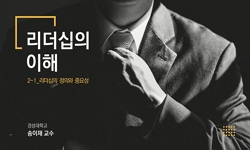문화예술기관을 포함한 모든 조직을 존속하게 해주는 것은 조직의 문화이고 조직의 문화를 형성하는데 가장 중요한 요소는 리더십이다. 서번트 리더십(Servant Leadership)은 1970년 발표된 이후 ...
http://chineseinput.net/에서 pinyin(병음)방식으로 중국어를 변환할 수 있습니다.
변환된 중국어를 복사하여 사용하시면 됩니다.
- 中文 을 입력하시려면 zhongwen을 입력하시고 space를누르시면됩니다.
- 北京 을 입력하시려면 beijing을 입력하시고 space를 누르시면 됩니다.
https://www.riss.kr/link?id=T13845978
- 저자
-
발행사항
서울 : 경희대학교 경영대학원, 2015
-
학위논문사항
학위논문(석사) -- 경희대학교 경영대학원 , 문화예술경영학과 , 2015. 8
-
발행연도
2015
-
작성언어
한국어
- 주제어
-
DDC
658.1 판사항(22)
-
발행국(도시)
서울
-
기타서명
A study on the impact of servant leadership on job attitude of organizational members in cultural and art organizations : focusing on comparison of national museum of modern and contemporary art vs. general company
-
형태사항
ⅶ, 98 p. : 삽화 ; 26 cm
-
일반주기명
지도교수: 박신의
경희대학교 논문은 저작권에 의해 보호받습니다.
참고문헌: p. 88-90 - 소장기관
-
0
상세조회 -
0
다운로드
부가정보
국문 초록 (Abstract)
문화예술기관(국립현대미술관)과 일반기업의 비교결과 문화예술기관은 서번트 리더십의 하위요소 중 비전제시가 직무태도에 가장 큰 영향을 미치는 요소로 나타난 반면 일반기업은 청지기정신이 직무태도에 가장 큰 영향을 미치는 요소로 나타났다.
이는 문화예술기관의 경우 수익이나 성과를 통한 이윤 창출이 중요시되는 일반 기업과는 달리 상대적으로 질적인 측면, 자율성과 전문성이 더 중요시되기 때문에 비전제시에 대한 영향이 더 크게 나타나는 것으로 유추해 볼 수 있다.
전체적으로 문화예술기관(국립현대미술관)보다 일반기업에서 서번트 리더십이 조직구성원의 직무태도에 미치는 영향에 대한 가설이 많이 채택되었고 각 문항 별 인식 정도에 대한 평균도 높은 것으로 나타났다. 이는 문화예술기관에서의 리더십은 예술적 차원에서의 경쟁력(예술적 수월성)과 대국민 향유기회의 확대(경영 효율성) 두 가지를 모두 만족시켜야 한다는 상황 속에서 일반기업과는 다른 경영 환경을 가지기 때문이다.
문화예술기관(국립현대미술관)의 특수성을 고려하여 상호존중을 통해 의견의 다양성을 보장하고, 수평적인 관계 속에서 부서간의 유기적인 협업이 가능한 조직문화를 이룩하기 위해서는 문화예술기관에 맞는 서번트 리더십이 필요하다. 또한 이를 위해서는 올바른 비전제시가 선행되어야 할 것이다.
문화예술기관을 포함한 모든 조직을 존속하게 해주는 것은 조직의 문화이고 조직의 문화를 형성하는데 가장 중요한 요소는 리더십이다. 서번트 리더십(Servant Leadership)은 1970년 발표된 이후 세계적인 기업들과 경영인들에게 큰 영향을 주었다. 서번트 리더십은 섬김의 정신을 발휘하여 조직 구성원의 일체화와 공감대형성을 이루며, 리더의 봉사, 비전 제시 등을 통하여 조직의 목표를 달성하려는 시각을 말한다. 하지만 국내에서는 아직 서번트 리더십의 적용이 부족하며, 특히 문화예술기관에서는 서번트 리더십을 포함하여 전반적인 리더십에 대한 연구가 매우 부족한 상황이다. 이 시점에서 서번트 리더십에 관한 실증연구와 문화예술기관과 일반 기업 간의 비교를 통한 문화예술경영 리더십 연구는 매우 필요한 것이라 하겠다.
문화예술기관(국립현대미술관)과 일반기업의 비교결과 문화예술기관은 서번트 리더십의 하위요소 중 비전제시가 직무태도에 가장 큰 영향을 미치는 요소로 나타난 반면 일반기업은 청지기정신이 직무태도에 가장 큰 영향을 미치는 요소로 나타났다.
이는 문화예술기관의 경우 수익이나 성과를 통한 이윤 창출이 중요시되는 일반 기업과는 달리 상대적으로 질적인 측면, 자율성과 전문성이 더 중요시되기 때문에 비전제시에 대한 영향이 더 크게 나타나는 것으로 유추해 볼 수 있다.
전체적으로 문화예술기관(국립현대미술관)보다 일반기업에서 서번트 리더십이 조직구성원의 직무태도에 미치는 영향에 대한 가설이 많이 채택되었고 각 문항 별 인식 정도에 대한 평균도 높은 것으로 나타났다. 이는 문화예술기관에서의 리더십은 예술적 차원에서의 경쟁력(예술적 수월성)과 대국민 향유기회의 확대(경영 효율성) 두 가지를 모두 만족시켜야 한다는 상황 속에서 일반기업과는 다른 경영 환경을 가지기 때문이다.
문화예술기관(국립현대미술관)의 특수성을 고려하여 상호존중을 통해 의견의 다양성을 보장하고, 수평적인 관계 속에서 부서간의 유기적인 협업이 가능한 조직문화를 이룩하기 위해서는 문화예술기관에 맞는 서번트 리더십이 필요하다. 또한 이를 위해서는 올바른 비전제시가 선행되어야 할 것이다.
다국어 초록 (Multilingual Abstract)
As a result of comparison of cultural and art organizations including National Museum of Contemporary Art vs. general company, it was found that in cultural and art organizations, foresight, among the subfactors of servant leadership, had the greatest impact on job attitude because it had a significant positive (+) impact on leader trust and emotional commitment, whereas in general companies, stewardship, among the subfactors of servant leadership, had the greatest impact on job attitude because it had a significant positive (+) impact on organizational citizenship behavior and leader trust.
This suggests that cultural and art organizations are likely to have a more impact on foresight because such organizations put more emphasis on relatively qualitative aspects, autonomy and professionalism, than general organizations which put emphasis on profit making.
Resultingly, more hypotheses on the impact of servant leadership on job attitude in organizational members were adopted in general companies than in cultural and art organizations including National Museum of Contemporary Art and the average on the degree of recognition by each item appeared to be high. This is attributable to the fact that the leadership in cultural and art organizations has different management environments from that in general companies under the situation that the leadership in cultural and art organizations should satisfy both competitiveness (artistic supremacy) and nationwide expansion of enjoyment opportunity (management efficiency) at the artistic level.
To guarantee the diversity of opinions through mutual respect after considering the specificity of cultural and art organizations including National Museum of Contemporary Art and achieve an organizational culture where organic cooperation between departments can be realized under the horizontal relationship, servant leadership suitable for cultural and art organizations is necessary. Additionally, to achieve this, right foresight needs to be preceded.
What makes all organizations including cultural and art organizations continue to exist is organizational culture and the most important factor to form the organizational culture is leadership. Servant Leadership had a great impact on world-class orga...
What makes all organizations including cultural and art organizations continue to exist is organizational culture and the most important factor to form the organizational culture is leadership. Servant Leadership had a great impact on world-class organizations and businessmen after it was introduced in 1970. Servant leadership refers to a perspective that a leader tries to form unification and bond of sympathy by exerting his/her spirit of serving and achieve organizational goals through leader volunteering, foresight, etc. However, the application of servant leadership still lacks in korea and in particular, few studies have been made on the overall leadership including servant leadership in cultural and art organizations. At this point, it can be presumed that empirical study on servant leadership and leadership study in cultural and arts management through comparison of cultural and art organizations vs. general companies are necessary.
As a result of comparison of cultural and art organizations including National Museum of Contemporary Art vs. general company, it was found that in cultural and art organizations, foresight, among the subfactors of servant leadership, had the greatest impact on job attitude because it had a significant positive (+) impact on leader trust and emotional commitment, whereas in general companies, stewardship, among the subfactors of servant leadership, had the greatest impact on job attitude because it had a significant positive (+) impact on organizational citizenship behavior and leader trust.
This suggests that cultural and art organizations are likely to have a more impact on foresight because such organizations put more emphasis on relatively qualitative aspects, autonomy and professionalism, than general organizations which put emphasis on profit making.
Resultingly, more hypotheses on the impact of servant leadership on job attitude in organizational members were adopted in general companies than in cultural and art organizations including National Museum of Contemporary Art and the average on the degree of recognition by each item appeared to be high. This is attributable to the fact that the leadership in cultural and art organizations has different management environments from that in general companies under the situation that the leadership in cultural and art organizations should satisfy both competitiveness (artistic supremacy) and nationwide expansion of enjoyment opportunity (management efficiency) at the artistic level.
To guarantee the diversity of opinions through mutual respect after considering the specificity of cultural and art organizations including National Museum of Contemporary Art and achieve an organizational culture where organic cooperation between departments can be realized under the horizontal relationship, servant leadership suitable for cultural and art organizations is necessary. Additionally, to achieve this, right foresight needs to be preceded.
목차 (Table of Contents)
- I. 서 론 1
- 1. 연구배경 및 목적 1
- 2. 연구범위 및 방법 3
- 3. 연구의 구성 5
- Ⅱ. 이론적실증적 문헌 검토 6
- I. 서 론 1
- 1. 연구배경 및 목적 1
- 2. 연구범위 및 방법 3
- 3. 연구의 구성 5
- Ⅱ. 이론적실증적 문헌 검토 6
- 1. 서번트 리더십 6
- 1) 서번트 리더십 이론의 발전 과정 6
- 2) 서번트 리더십의 정의 9
- 3) 서번트 리더십의 선행 연구 17
- 2. 조직시민행동 21
- 1) 조직시민행동의 정의 21
- 2) 조직시민행동의 구성요소 22
- 3) 조직시민행동의 선행연구 24
- 3. 신뢰 25
- 1) 신뢰의 정의 25
- 2) 신뢰의 구성요소 28
- 3) 리더 신뢰의 선행연구 31
- 4. 조직몰입 32
- 1) 조직몰입의 정의 32
- 2) 조직몰입의 구성요소 33
- 3) 조직몰입의 선행연구 35
- 5. 문화예술기관과 일반기업 36
- 1) 문화예술기관과 일반기업의 차이점 36
- Ⅲ. 연구모형 및 가설설정 37
- 1. 연구모형의 설계 37
- 2. 연구가설의 설정 38
- Ⅳ. 연구설계 및 분석방법 41
- 1. 변수의 조작적 정의 및 측정도구 41
- 1) 서번트 리더십 41
- 2) 조직시민행동 42
- 3) 리더 신뢰 43
- 4) 정서적 몰입 44
- 2. 조사분석방법 45
- 1) 조사대상 45
- 2) 조사기간 및 방법 45
- 3) 설문지 구성 46
- 4) 분석방법 47
- Ⅴ. 실증분석 결과 48
- 1. 표본의 인구통계적 특성 48
- 2. 주요변수들에 의한 기술통계 50
- 3. 신뢰도 분석 51
- 4. 주요 변수들에 대한 평균차이 분석 52
- 1) 서번트 리더십의 평균차이 분석 52
- 2) 직무태도의 평균차이 분석 60
- 5. 상관관계 분석 67
- 6. 서번트리더십이 직무태도에 미치는 영향 분석 69
- 1) 가설검증 69
- 2) 가설검증 결과 요약 77
- 7. 분석결과 종합 79
- Ⅵ. 결론 및 시사점 83
- 1. 연구결과 요약 83
- 2. 발견사항 및 시사점 85
- 3 연구의 한계 및 향후 연구과제 87
- 참 고 문 헌 89
- Abstract 92
- 설문지










